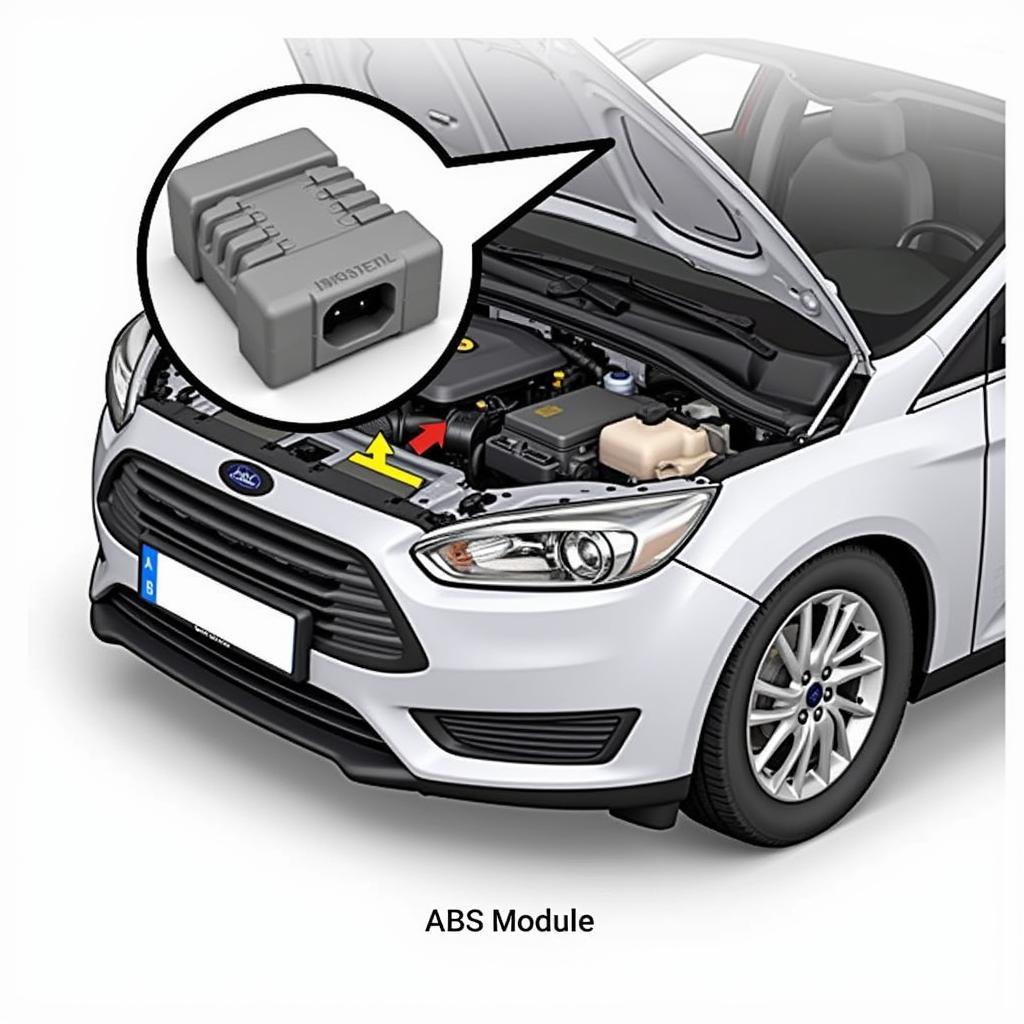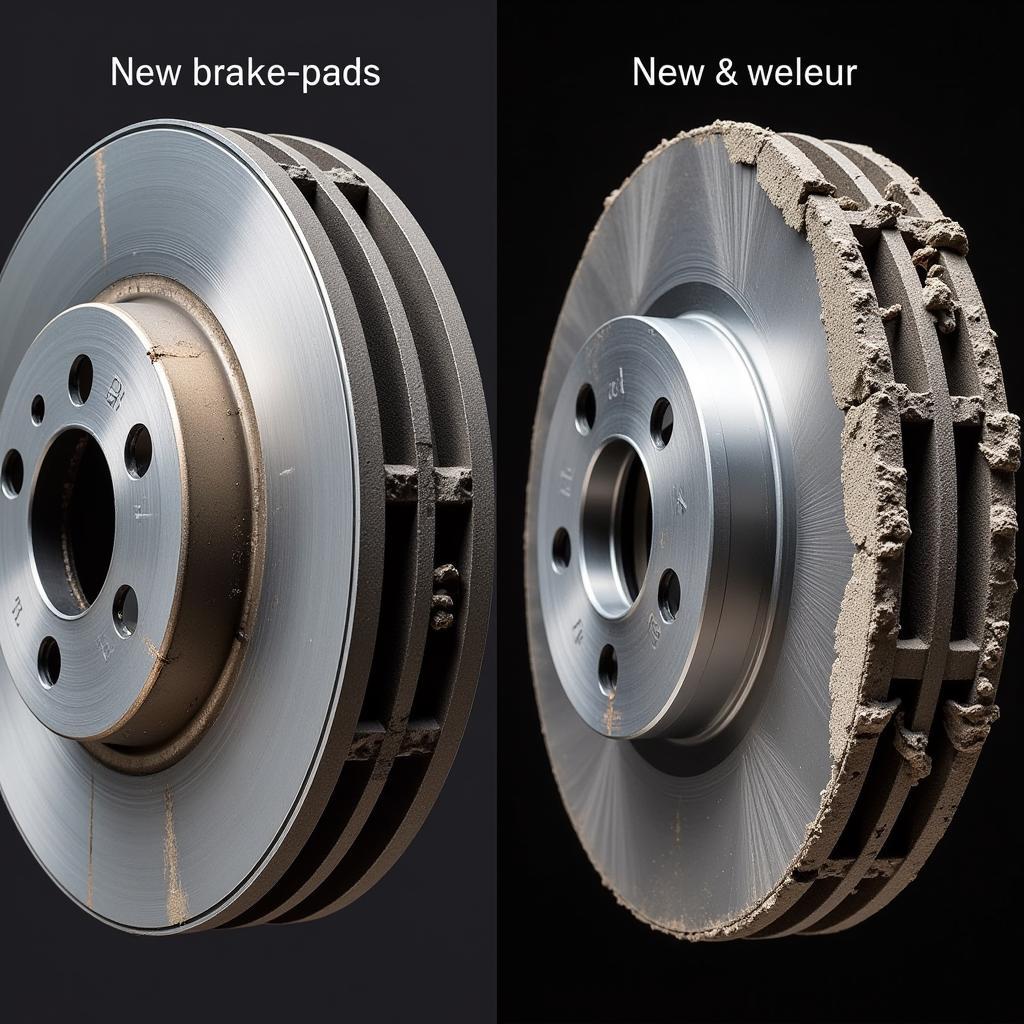The anti-lock brake warning light (ABS light) on your dashboard is a crucial safety indicator. Ignoring it could compromise your braking performance, especially in challenging conditions. This comprehensive guide will delve into the intricacies of the ABS light, exploring its causes, diagnostic procedures, and solutions. We’ll equip you with the knowledge to address this warning effectively, ensuring your safety on the road. Let’s navigate this critical aspect of car maintenance together.
Understanding the anti-lock brake system (ABS) is fundamental to addressing the warning light. ABS prevents wheel lockup during hard braking, allowing you to maintain steering control. When the ABS light illuminates, it signals a potential issue within this vital system. This could range from a simple sensor malfunction to a more complex hydraulic problem. For specific Audi models, you can find relevant information regarding red brake warnings at audi red brake warning.
Decoding the Anti-Lock Brake Warning Light
The ABS light usually appears as a stylized text abbreviation “ABS” or a circled exclamation point within parentheses. Its illumination indicates the ABS module has detected a fault. While your regular brakes might still function, the anti-lock feature is disabled, increasing the risk of skidding during sudden stops. Addressing this promptly is essential for safe driving.
Common Causes of an Illuminated Anti-Lock Brake Warning Light
Several factors can trigger the anti-lock brake warning light. Low brake fluid levels are a common culprit, as the ABS system relies on adequate hydraulic pressure. A malfunctioning ABS module, wheel speed sensors, or damaged wiring within the system can also be responsible. Additionally, a blown fuse or faulty relay can disrupt the electrical circuit powering the ABS.
Diagnosing the Problem
Diagnosing the anti-lock brake warning light often requires specialized diagnostic tools. These tools can read the fault codes stored in the ABS module, pinpointing the specific issue. A visual inspection of the brake system components, including brake lines, sensors, and wiring, is also crucial. Checking the brake fluid level and condition is another essential diagnostic step. For Audi A4 owners experiencing this issue, we recommend checking our resource on red brake warning light audi a4.
Using Diagnostic Tools for Anti-Lock Brake Issues
Modern vehicles rely heavily on electronic control units (ECUs). The ABS module, an ECU dedicated to the anti-lock brake system, continuously monitors the system’s health. When a fault occurs, it logs a diagnostic trouble code (DTC). Using a diagnostic scanner allows you to retrieve these codes, providing valuable insights into the root cause of the anti-lock brake warning light.
Solutions and Repairs
Depending on the diagnosed fault, solutions can range from simple fixes to more complex repairs. Topping up the brake fluid or replacing a blown fuse are relatively straightforward tasks. However, issues with the ABS module, wheel speed sensors, or hydraulic components might necessitate professional assistance. For instance, a faulty ABS module often requires replacement or reprogramming, which is best handled by a qualified technician. If you own an Audi A6 and are experiencing a red brake warning light, you may find this article helpful: red brake warning light on audi a6.
Remote Diagnostic and Programming Services
Advancements in automotive technology have facilitated remote diagnostic and programming services. These services allow expert technicians to access your vehicle’s systems remotely, diagnose the problem, and even perform software updates or reprogramming. This innovative approach can save time and potentially reduce repair costs, especially for software-related issues. “Remote diagnostics are revolutionizing how we troubleshoot car problems,” says John Miller, a senior automotive diagnostic technician. “It provides quick, efficient, and accurate solutions, especially for complex electronic systems like ABS.”
Conclusion
The anti-lock brake warning light serves as a vital safety alert. Ignoring it could compromise your vehicle’s braking performance and put you at risk. Understanding its significance, the potential causes, and the diagnostic procedures empowers you to address the issue proactively. By seeking timely repairs, whether through traditional methods or remote services, you can maintain the optimal functionality of your anti-lock brake system and ensure safer driving. For Audi A2 owners, this resource might be useful: audi a2 red brake warning light. Remember, your safety on the road is paramount, and addressing the anti-lock brake warning light is a crucial step towards maintaining it. Don’t hesitate to consult a qualified technician for any concerns.
 ABS Module Location in a Car's Engine Bay
ABS Module Location in a Car's Engine Bay
“Regular maintenance and prompt attention to warning lights are key to preventing costly repairs down the line,” adds Sarah Johnson, a certified automotive engineer. “A little proactive care can go a long way in ensuring the longevity and safety of your vehicle.” For Audi A6 owners, you might find this helpful: audi a6 red brake warning light.


